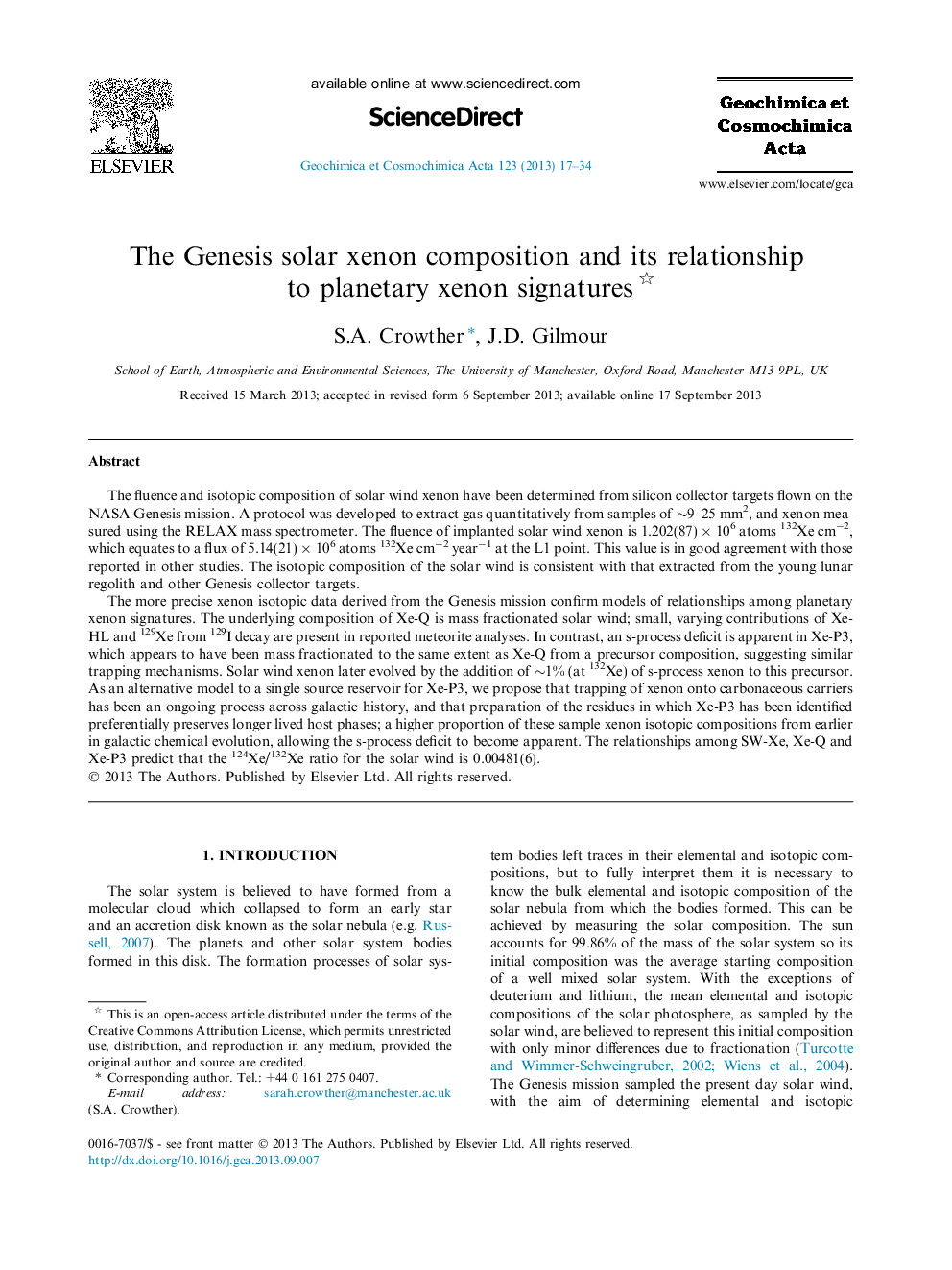| Article ID | Journal | Published Year | Pages | File Type |
|---|---|---|---|---|
| 6439076 | Geochimica et Cosmochimica Acta | 2013 | 18 Pages |
Abstract
The more precise xenon isotopic data derived from the Genesis mission confirm models of relationships among planetary xenon signatures. The underlying composition of Xe-Q is mass fractionated solar wind; small, varying contributions of Xe-HL and 129Xe from 129I decay are present in reported meteorite analyses. In contrast, an s-process deficit is apparent in Xe-P3, which appears to have been mass fractionated to the same extent as Xe-Q from a precursor composition, suggesting similar trapping mechanisms. Solar wind xenon later evolved by the addition of â¼1% (at 132Xe) of s-process xenon to this precursor. As an alternative model to a single source reservoir for Xe-P3, we propose that trapping of xenon onto carbonaceous carriers has been an ongoing process across galactic history, and that preparation of the residues in which Xe-P3 has been identified preferentially preserves longer lived host phases; a higher proportion of these sample xenon isotopic compositions from earlier in galactic chemical evolution, allowing the s-process deficit to become apparent. The relationships among SW-Xe, Xe-Q and Xe-P3 predict that the 124Xe/132Xe ratio for the solar wind is 0.00481(6).
Related Topics
Physical Sciences and Engineering
Earth and Planetary Sciences
Geochemistry and Petrology
Authors
S.A. Crowther, J.D. Gilmour,
